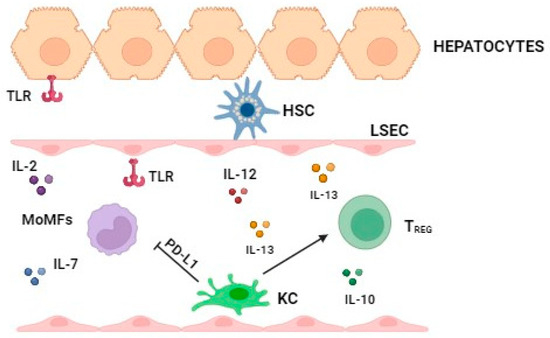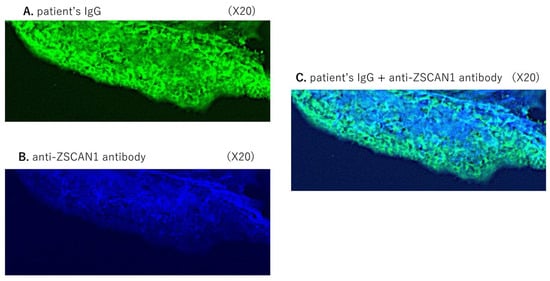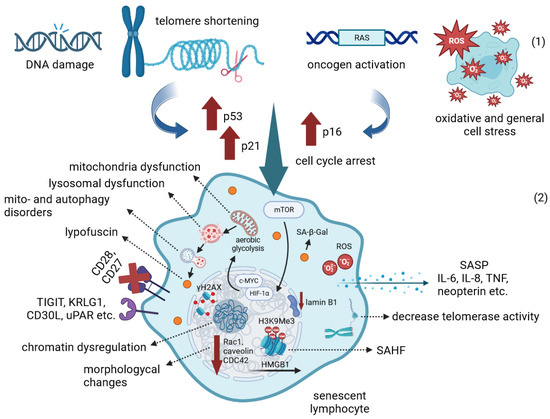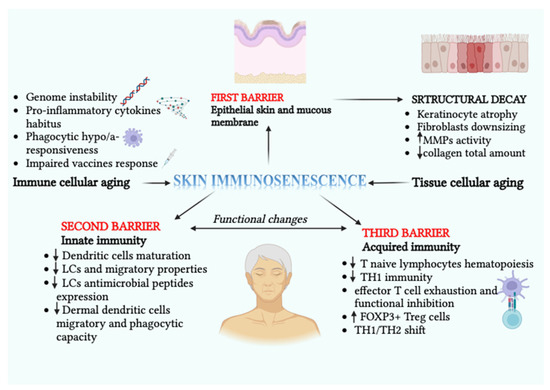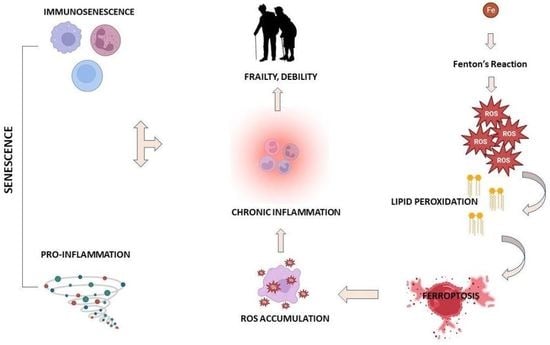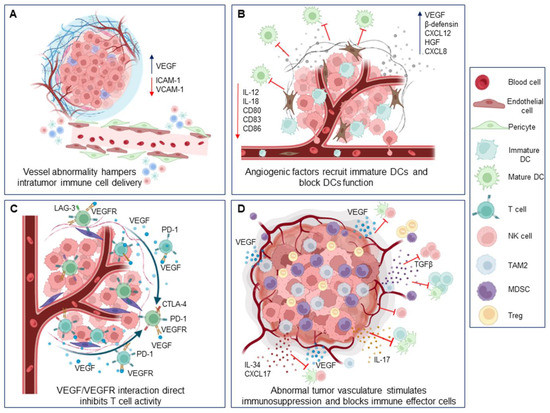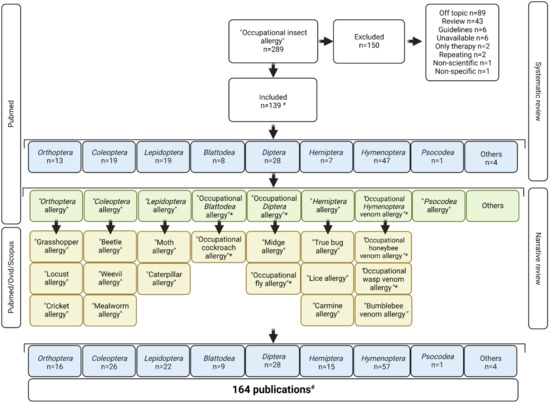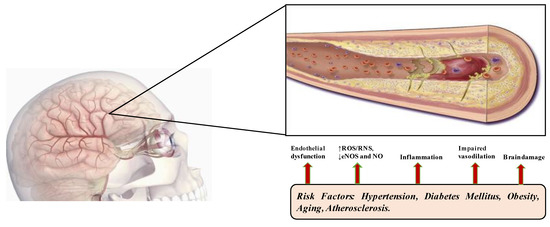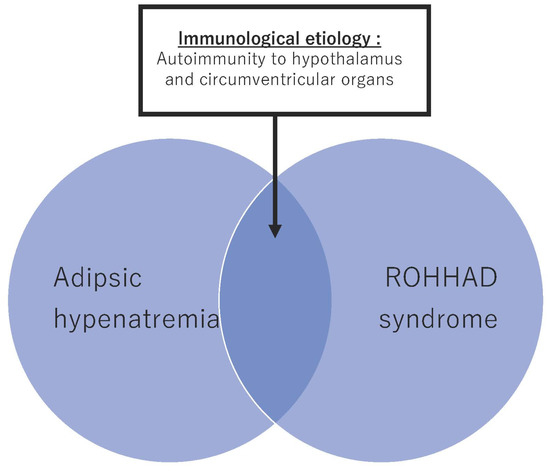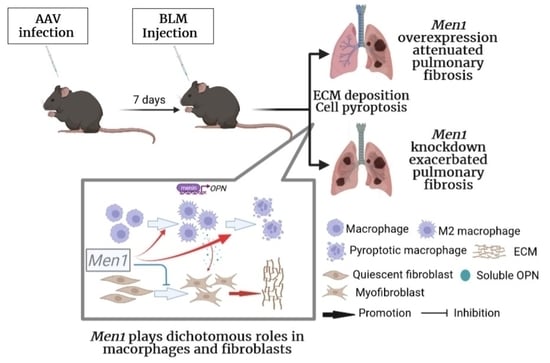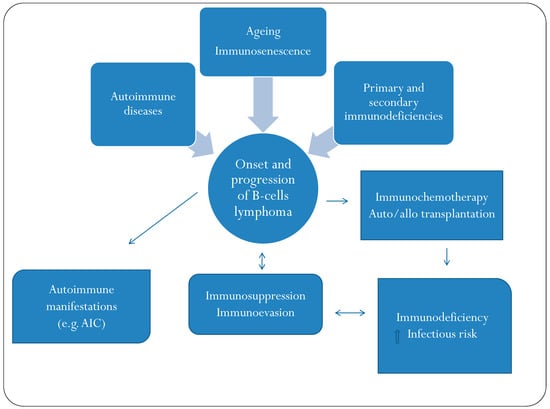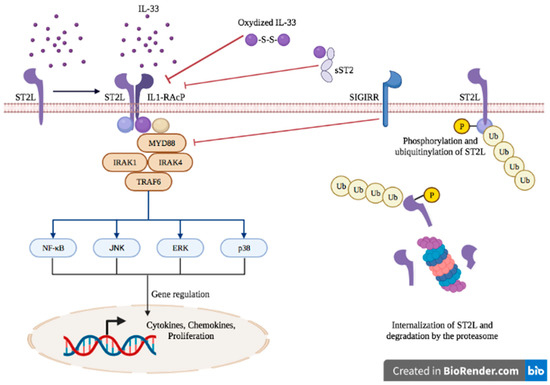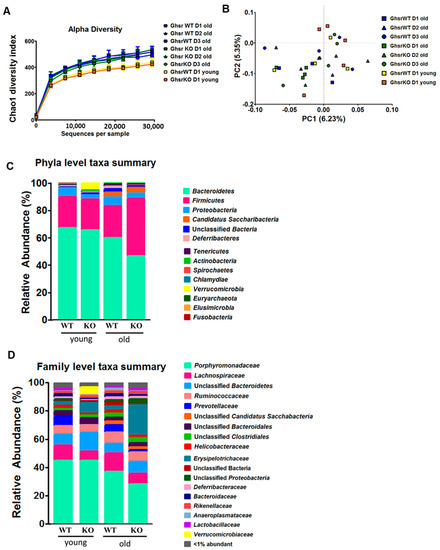Immunopathology and Immunosenescence
Share This Topical Collection
Editors
 Prof. Dr. Calogero Caruso
Prof. Dr. Calogero Caruso
 Prof. Dr. Calogero Caruso
Prof. Dr. Calogero Caruso
E-Mail
Website
Collection Editor
Laboratory of Immunopathology and Immunosenescence, Department of Biomedicine, Neuroscience and Advanced Diagnostics, University of Palermo, 90134 Palermo, Italy
Interests: ageing; age-related diseases; centenarians; immunogenetics; immunosenescence; inflammation; longevity; successful ageing; unsuccessful ageing
Special Issues, Collections and Topics in MDPI journals
 Prof. Dr. Giuseppina Candore
Prof. Dr. Giuseppina Candore
 Prof. Dr. Giuseppina Candore
Prof. Dr. Giuseppina Candore
E-Mail
Website
Collection Editor
Laboratory of Immunopathology and Immunosenescence, Department of Biomedicine, Neuroscience and Advanced Diagnostics, University of Palermo, Palermo, Italy
Interests: autoimmunity; immune response; immunogenetics; immunosenescence; inflammaging; immunopathology
Special Issues, Collections and Topics in MDPI journals
 Dr. Anna Aiello
Dr. Anna Aiello
 Dr. Anna Aiello
Dr. Anna Aiello
E-Mail
Website
Collection Editor
Laboratory of Immunopathology and Immunosenescence, Department of Biomedicine, Neuroscience and Advanced Diagnostics, University of Palermo, 90134 Palermo, Italy
Interests: inflamm-aging; immunogenetics; nutritional interventions; positive biology; viral infections
Special Issues, Collections and Topics in MDPI journals
 Dr. Giulia Accardi
Dr. Giulia Accardi
 Dr. Giulia Accardi
Dr. Giulia Accardi
E-Mail
Website1
Website2
Collection Editor
Laboratory of Immunopathology and Immunosenescence, Department of Biomedicine, Neuroscience and Advanced Diagnostics, University of Palermo, Corso Tuköry, 211, 90134 Palermo, Italy
Interests: aging; nutrition; inflammation nutraceuticals; longevity; centenarians
Special Issues, Collections and Topics in MDPI journals
Topical Collection Information
Dear Colleagues,
Advances in immunology have led to a greater understanding of the human immune response, and of its role in health and disease, although some aspects still need to be clarified. Two concern immunopathology and immunosenescence. Immunopathology refers to the damage to the self, caused by a hyper-reactive immune system in response to normal stimuli, and contributes to the mechanisms of various human diseases. Conversely, the reduction in the ability to trigger immune responses effective against infections and vaccinations, observed not only in older people, but also during some infections and some therapeutic treatments, is called immunosenescence. The study of immunopathology has been separated from the study of immunosenescence, but it is becoming clear that there might be a close relationship between them. Rheumatoid arthritis (RA) patients are immunocompromised, and several data suggest that premature ageing of the immune system contributes to the pathogenesis of RA. Furthermore, the chronic immune stimulation characteristic of RA can itself age the immune system. On the other hand, the interaction between immunosenescence and its hallmark infllamm-ageing, i.e., an immunopathological response, has been hypothesized to contribute to the cytokine storm in older patients affected by COVID-19 as well as to age-related diseases. This Topical Collection will provide an up-to-date overview, gathering research or review manuscripts addressing processes that mechanistically participate to induce immunopathology and/or immunosenescence. Thus, papers discussing the mechanisms and the molecular pathways able to affect immune cell responses, considering the role of environment and lifestyle, genetics and age, as well as sex and gender as drivers are welcome. Studies on molecular, cellular and blood biomarkers are also welcome.
Prof. Dr. Calogero Caruso
Prof. Dr. Giuseppina Candore
Dr. Anna Aiello
Dr. Giulia Accardi
Collection Editors
Manuscript Submission Information
Manuscripts should be submitted online at www.mdpi.com by registering and logging in to this website. Once you are registered, click here to go to the submission form. Manuscripts can be submitted until the deadline. All submissions that pass pre-check are peer-reviewed. Accepted papers will be published continuously in the journal (as soon as accepted) and will be listed together on the collection website. Research articles, review articles as well as short communications are invited. For planned papers, a title and short abstract (about 100 words) can be sent to the Editorial Office for announcement on this website.
Submitted manuscripts should not have been published previously, nor be under consideration for publication elsewhere (except conference proceedings papers). All manuscripts are thoroughly refereed through a single-blind peer-review process. A guide for authors and other relevant information for submission of manuscripts is available on the Instructions for Authors page. International Journal of Molecular Sciences is an international peer-reviewed open access semimonthly journal published by MDPI.
Please visit the Instructions for Authors page before submitting a manuscript.
There is an Article Processing Charge (APC) for publication in this
open access journal. For details about the APC please see here.
Submitted papers should be well formatted and use good English. Authors may use MDPI's
English editing service prior to publication or during author revisions.
Keywords
- age-related diseases
- allergy
- autoimmunity
- gender
- hypersensitivity
- immunogenetics
- immunopathology
- immunosenescence
Published Papers (24 papers)
Open AccessReview
Get Spliced: Uniting Alternative Splicing and Arthritis
by
Maurice J. H. van Haaren, Levina Bertina Steller, Sebastiaan J. Vastert, Jorg J. A. Calis and Jorg van Loosdregt
Viewed by 1609
Abstract
Immune responses demand the rapid and precise regulation of gene protein expression. Splicing is a crucial step in this process; ~95% of protein-coding gene transcripts are spliced during mRNA maturation. Alternative splicing allows for distinct functional regulation, as it can affect transcript degradation
[...] Read more.
Immune responses demand the rapid and precise regulation of gene protein expression. Splicing is a crucial step in this process; ~95% of protein-coding gene transcripts are spliced during mRNA maturation. Alternative splicing allows for distinct functional regulation, as it can affect transcript degradation and can lead to alternative functional protein isoforms. There is increasing evidence that splicing can directly regulate immune responses. For several genes, immune cells display dramatic changes in isoform-level transcript expression patterns upon activation. Recent advances in long-read RNA sequencing assays have enabled an unbiased and complete description of transcript isoform expression patterns. With an increasing amount of cell types and conditions that have been analyzed with such assays, thousands of novel transcript isoforms have been identified. Alternative splicing has been associated with autoimmune diseases, including arthritis. Here, GWASs revealed that SNPs associated with arthritis are enriched in splice sites. In this review, we will discuss how alternative splicing is involved in immune responses and how the dysregulation of alternative splicing can contribute to arthritis pathogenesis. In addition, we will discuss the therapeutic potential of modulating alternative splicing, which includes examples of spliceform-based biomarkers for disease severity or disease subtype, splicing manipulation using antisense oligonucleotides, and the targeting of specific immune-related spliceforms using antibodies.
Full article
►▼
Show Figures
Open AccessReview
Exploring the Interplay between Cellular Senescence, Immunity, and Fibrosing Interstitial Lung Diseases: Challenges and Opportunities
by
Fernanda Hernandez-Gonzalez, Federico Pietrocola, Paolo Cameli, Elena Bargagli, Sergio Prieto-González, Tamara Cruz, Nuria Mendoza, Mauricio Rojas, Manuel Serrano, Alvar Agustí, Rosa Faner, Jose A. Gómez-Puerta and Jacobo Sellares
Viewed by 1514
Abstract
Fibrosing interstitial lung diseases (ILDs) are characterized by the gradual and irreversible accumulation of scar tissue in the lung parenchyma. The role of the immune response in the pathogenesis of pulmonary fibrosis remains unclear. In recent years, substantial advancements have been made in
[...] Read more.
Fibrosing interstitial lung diseases (ILDs) are characterized by the gradual and irreversible accumulation of scar tissue in the lung parenchyma. The role of the immune response in the pathogenesis of pulmonary fibrosis remains unclear. In recent years, substantial advancements have been made in our comprehension of the pathobiology driving fibrosing ILDs, particularly concerning various age-related cellular disturbances and immune mechanisms believed to contribute to an inadequate response to stress and increased susceptibility to lung fibrosis. Emerging studies emphasize cellular senescence as a key mechanism implicated in the pathobiology of age-related diseases, including pulmonary fibrosis. Cellular senescence, marked by antagonistic pleiotropy, and the complex interplay with immunity, are pivotal in comprehending many aspects of lung fibrosis. Here, we review progress in novel concepts in cellular senescence, its association with the dysregulation of the immune response, and the evidence underlining its detrimental role in fibrosing ILDs.
Full article
►▼
Show Figures
Open AccessReview
Pathology of Diabetes-Induced Immune Dysfunction
by
Michael Alexander, Eric Cho, Eiger Gliozheni, Yusuf Salem, Joshua Cheung and Hirohito Ichii
Cited by 4 | Viewed by 2197
Abstract
Diabetes is associated with numerous comorbidities, one of which is increased vulnerability to infections. This review will focus on how diabetes mellitus (DM) affects the immune system and its various components, leading to the impaired proliferation of immune cells and the induction of
[...] Read more.
Diabetes is associated with numerous comorbidities, one of which is increased vulnerability to infections. This review will focus on how diabetes mellitus (DM) affects the immune system and its various components, leading to the impaired proliferation of immune cells and the induction of senescence. We will explore how the pathology of diabetes-induced immune dysfunction may have similarities to the pathways of “inflammaging”, a persistent low-grade inflammation common in the elderly. Inflammaging may increase the likelihood of conditions such as rheumatoid arthritis (RA) and periodontitis at a younger age. Diabetes affects bone marrow composition and cellular senescence, and in combination with advanced age also affects lymphopoiesis by increasing myeloid differentiation and reducing lymphoid differentiation. Consequently, this leads to a reduced immune system response in both the innate and adaptive phases, resulting in higher infection rates, reduced vaccine response, and increased immune cells’ senescence in diabetics. We will also explore how some diabetes drugs induce immune senescence despite their benefits on glycemic control.
Full article
►▼
Show Figures
Open AccessReview
The PD-1/PD-L1 Axis in the Biology of MASLD
by
Rosaria Maria Pipitone, Giulia Lupo, Rossella Zito, Ayesha Javed, Salvatore Petta, Grazia Pennisi and Stefania Grimaudo
Cited by 1 | Viewed by 2127
Abstract
Metabolic Dysfunction-Associated Steatotic Liver (MASL), previously named nonalcoholic fatty liver (NAFL), is a multifactorial disease in which metabolic, genetic, and environmental risk factors play a predominant role. Obesity and type 2 diabetes act as triggers of the inflammatory response, which contributes to the
[...] Read more.
Metabolic Dysfunction-Associated Steatotic Liver (MASL), previously named nonalcoholic fatty liver (NAFL), is a multifactorial disease in which metabolic, genetic, and environmental risk factors play a predominant role. Obesity and type 2 diabetes act as triggers of the inflammatory response, which contributes to the progression of MASL to Metabolic Dysfunction-Associated Steatohepatitis and the development of hepatocellular carcinoma. In the liver, several parenchymal, nonparenchymal, and immune cells maintain immunological homeostasis, and different regulatory pathways balance the activation of the innate and adaptative immune system. PD-1/PD-L1 signaling acts, in the maintenance of the balance between the immune responses and the tissue immune homeostasis, promoting self-tolerance through the modulation of activated T cells. Recently, PD-1 has received much attention for its roles in inducing an exhausted T cells phenotype, promoting the tumor escape from immune responses. Indeed, in MASLD, the excessive fat accumulation dysregulates the immune system, increasing cytotoxic lymphocytes and decreasing their cytolytic activity. In this context, T cells exacerbate liver damage and promote tumor progression. The aim of this review is to illustrate the main pathogenetic mechanisms by which the immune system promotes the progression of MASLD and the transition to HCC, as well as to discuss the possible therapeutic applications of PD-1/PD-L1 target therapy to activate T cells and reinvigorate immune surveillance against cancer.
Full article
►▼
Show Figures
Open AccessArticle
IRF1 Mediates Growth Arrest and the Induction of a Secretory Phenotype in Alveolar Epithelial Cells in Response to Inflammatory Cytokines IFNγ/TNFα
by
Giulia Recchia Luciani, Amelia Barilli, Rossana Visigalli, Roberto Sala, Valeria Dall’Asta and Bianca Maria Rotoli
Cited by 3 | Viewed by 1556
Abstract
In COVID-19, cytokine release syndrome can cause severe lung tissue damage leading to acute respiratory distress syndrome (ARDS). Here, we address the effects of IFNγ, TNFα, IL-1β and IL-6 on the growth arrest of alveolar A549 cells, focusing on the role of the
[...] Read more.
In COVID-19, cytokine release syndrome can cause severe lung tissue damage leading to acute respiratory distress syndrome (ARDS). Here, we address the effects of IFNγ, TNFα, IL-1β and IL-6 on the growth arrest of alveolar A549 cells, focusing on the role of the IFN regulatory factor 1 (IRF1) transcription factor. The efficacy of JAK1/2 inhibitor baricitinib has also been tested. A549 WT and IRF1 KO cells were exposed to cytokines for up to 72 h. Cell proliferation and death were evaluated with the resazurin assay, analysis of cell cycle and cycle-regulator proteins, LDH release and Annexin-V positivity; the induction of senescence and senescence-associated secretory phenotype (SASP) was evaluated through β-galactosidase staining and the quantitation of secreted inflammatory mediators. While IL-1 and IL-6 proved ineffective, IFNγ plus TNFα caused a proliferative arrest in A549 WT cells with alterations in cell morphology, along with the acquisition of a secretory phenotype. These effects were STAT and IRF1-dependent since they were prevented by baricitinib and much less evident in IRF1 KO than in WT cells. In alveolar cells, STATs/IRF1 axis is required for cytokine-induced proliferative arrest and the induction of a secretory phenotype. Hence, baricitininb is a promising therapeutic strategy for the attenuation of senescence-associated inflammation.
Full article
►▼
Show Figures
Open AccessCase Report
High-Titer Anti-ZSCAN1 Antibodies in a Toddler Clinically Diagnosed with Apparent Rapid-Onset Obesity with Hypothalamic Dysfunction, Hypoventilation, and Autonomic Dysregulation Syndrome
by
Vlad Tocan, Akari Nakamura-Utsunomiya, Yuri Sonoda, Wakato Matsuoka, Soichi Mizuguchi, Yuichiro Muto, Takaaki Hijioka, Masao Nogami, Daiki Sasaoka, Fusa Nagamatsu, Utako Oba, Naonori Kawakubo, Hiroshi Hamada, Yuichi Mushimoto, Pin Fee Chong, Noriyuki Kaku, Yuhki Koga, Yasunari Sakai, Yoshinao Oda, Tatsuro Tajiri and Shouichi Ohgaadd
Show full author list
remove
Hide full author list
| Viewed by 1411
Abstract
Severe obesity in young children prompts for a differential diagnosis that includes syndromic conditions. Rapid-Onset Obesity with Hypothalamic Dysfunction, Hypoventilation, and Autonomic Dysregulation (ROHHAD) syndrome is a potentially fatal disorder characterized by rapid-onset obesity associated with hypoventilation, neural crest tumors, and endocrine and
[...] Read more.
Severe obesity in young children prompts for a differential diagnosis that includes syndromic conditions. Rapid-Onset Obesity with Hypothalamic Dysfunction, Hypoventilation, and Autonomic Dysregulation (ROHHAD) syndrome is a potentially fatal disorder characterized by rapid-onset obesity associated with hypoventilation, neural crest tumors, and endocrine and behavioral abnormalities. The etiology of ROHHAD syndrome remains to be established, but recent research has been focusing on autoimmunity. We report on a 2-year-old girl with rapid-onset obesity during the first year of life who progressed to hypoventilation and encephalitis in less than four months since the start of accelerated weight gain. The patient had a high titer of anti-ZSCAN1 antibodies (348; reference range < 40), and the increased values did not decline after acute phase treatment. Other encephalitis-related antibodies, such as the anti-NDMA antibody, were not detected. The rapid progression from obesity onset to central hypoventilation with encephalitis warns about the severe consequences of early-onset ROHHAD syndrome. These data indicate that serial measurements of anti-ZSCAN1 antibodies might be useful for the diagnosis and estimation of disease severity. Further research is needed to determine whether it can predict the clinical course of ROHHAD syndrome and whether there is any difference in antibody production between patients with and without tumors.
Full article
►▼
Show Figures
Open AccessCommunication
Anti-ZSCAN1 Autoantibodies Are a Feasible Diagnostic Marker for ROHHAD Syndrome Not Associated with a Tumor
by
Akari Nakamura-Utsunomiya, Kei Yamaguchi and Naoki Goshima
Cited by 4 | Viewed by 1791
Abstract
Recent studies have reported the presence of autoantibodies against zinc finger and SCAN domain-containing protein 1 (ZSCAN1) in the sera of patients with rapid-onset obesity with hypoventilation, hypothalamic and autonomic dysregulation (ROHHAD) syndrome associated with neuroendocrine tumors, suggesting immunologic and paraneoplastic processes as
[...] Read more.
Recent studies have reported the presence of autoantibodies against zinc finger and SCAN domain-containing protein 1 (ZSCAN1) in the sera of patients with rapid-onset obesity with hypoventilation, hypothalamic and autonomic dysregulation (ROHHAD) syndrome associated with neuroendocrine tumors, suggesting immunologic and paraneoplastic processes as the pathologic underpinnings. Moreover, several hypothalamic regions, including the subfornical organ (SFO), were reported to exhibit antibody reactivity in a patient with ROHHAD syndrome not associated with a tumor. Whether ROHHAD syndrome not associated with a tumor is associated with anti-ZSCAN1 autoantibodies remains unclear. We used a comprehensive protein array analysis to identify candidate molecules in the sera of patients with ROHHAD syndrome and identified ZSCAN1 as a target antigen. We also found that ZSCAN1 was co-expressed at the site of antibody reactivity to the IgG in the patient serum observed in mouse SFOs and an enzyme-linked immunosorbent assay showed that >85% of the patients with ROHHAD syndrome were positive for anti-ZSCAN1 autoantibodies. These results suggest anti-ZSCAN1 autoantibodies as a feasible diagnostic marker in ROHHAD syndrome regardless of the presence of a tumor.
Full article
►▼
Show Figures
Open AccessReview
Reliable Hallmarks and Biomarkers of Senescent Lymphocytes
by
Yuliya S. Martyshkina, Valeriy P. Tereshchenko, Daria A. Bogdanova and Stanislav A. Rybtsov
Cited by 7 | Viewed by 2908
Abstract
The phenomenon of accumulation of senescent adaptive immunity cells in the elderly is attracting attention due to the increasing risk of global epidemics and aging of the global population. Elderly people are predisposed to various infectious and age-related diseases and are at higher
[...] Read more.
The phenomenon of accumulation of senescent adaptive immunity cells in the elderly is attracting attention due to the increasing risk of global epidemics and aging of the global population. Elderly people are predisposed to various infectious and age-related diseases and are at higher risk of vaccination failure. The accumulation of senescent cells increases age-related background inflammation, “Inflammaging”, causing lymphocyte exhaustion and cardiovascular, neurodegenerative, autoimmune and cancer diseases. Here, we present a comprehensive contemporary review of the mechanisms and phenotype of senescence in the adaptive immune system. Although modern research has not yet identified specific markers of aging lymphocytes, several sets of markers facilitate the separation of the aging population based on normal memory and exhausted cells for further genetic and functional analysis. The reasons for the higher predisposition of CD8
+ T-lymphocytes to senescence compared to the CD4
+ population are also discussed. We point out approaches for senescent-lymphocyte-targeting markers using small molecules (senolytics), antibodies and immunization against senescent cells. The suppression of immune senescence is the most relevant area of research aimed at developing anti-aging and anti-cancer therapy for prolonging the lifespan of the global population.
Full article
►▼
Show Figures
Open AccessArticle
Unveiling CD59-Antibody Interactions to Design Paratope-Mimicking Peptides for Complement Modulation
by
Annamaria Sandomenico, Alessia Ruggiero, Emanuela Iaccarino, Angela Oliver, Flavia Squeglia, Miguel Moreira, Luciana Esposito, Menotti Ruvo and Rita Berisio
Viewed by 1976
Abstract
CD59 is an abundant immuno-regulatory human protein that protects cells from damage by inhibiting the complement system. CD59 inhibits the assembly of the Membrane Attack Complex (MAC), the bactericidal pore-forming toxin of the innate immune system. In addition, several pathogenic viruses, including HIV-1,
[...] Read more.
CD59 is an abundant immuno-regulatory human protein that protects cells from damage by inhibiting the complement system. CD59 inhibits the assembly of the Membrane Attack Complex (MAC), the bactericidal pore-forming toxin of the innate immune system. In addition, several pathogenic viruses, including HIV-1, escape complement-mediated virolysis by incorporating this complement inhibitor in their own viral envelope. This makes human pathogenic viruses, such as HIV-1, not neutralised by the complement in human fluids. CD59 is also overexpressed in several cancer cells to resist the complement attack. Consistent with its importance as a therapeutical target, CD59-targeting antibodies have been proven to be successful in hindering HIV-1 growth and counteracting the effect of complement inhibition by specific cancer cells. In this work, we make use of bioinformatics and computational tools to identify CD59 interactions with blocking antibodies and to describe molecular details of the paratope–epitope interface. Based on this information, we design and produce paratope-mimicking bicyclic peptides able to target CD59. Our results set the basis for the development of antibody-mimicking small molecules targeting CD59 with potential therapeutic interest as complement activators.
Full article
►▼
Show Figures
Open AccessReview
Immunosenescence and Skin: A State of Art of Its Etiopathogenetic Role and Crucial Watershed for Systemic Implications
by
Vincenzo Papa, Federica Li Pomi, Francesco Borgia, Mario Vaccaro, Giovanni Pioggia and Sebastiano Gangemi
Cited by 9 | Viewed by 3596
Abstract
Immunosenescence is a complex multifactorial phenomenon consisting of wide-ranging remodeling of the immune system during the life span, resulting in an age-related qualitative–quantitative decline of immune cells and cytokines. A growing body of evidence in the international literature is highlighting the etiopathogenetic role
[...] Read more.
Immunosenescence is a complex multifactorial phenomenon consisting of wide-ranging remodeling of the immune system during the life span, resulting in an age-related qualitative–quantitative decline of immune cells and cytokines. A growing body of evidence in the international literature is highlighting the etiopathogenetic role of skin immunosenescence in the onset of various dermatologic conditions. Skin immunosenescence also serves as an interesting watershed for the onset of system-wide conditions in the context of allergic inflammation. Moreover, in recent years, an increasingly emerging and fascinating etiopathogenetic parallelism has been observed between some mechanisms of immunosenescence, both at cutaneous and systemic sites. This would help to explain the occurrence of apparently unconnected comorbidities. Throughout our review, we aim to shed light on emerging immunosenescent mechanisms shared between dermatologic disorders and other organ-specific diseases in the context of a more extensive discussion on the etiopathogenetic role of skin immunosenescence. A promising future perspective would be to focus on better understanding the mutual influence between skin and host immunity, as well as the influence of high inter-individual variability on immunosenescence/inflammaging. This can lead to a more comprehensive “immunobiographic” definition of each individual.
Full article
►▼
Show Figures
Open AccessReview
Ferroptosis and Senescence: A Systematic Review
by
Donatella Coradduzza, Antonella Congiargiu, Zhichao Chen, Angelo Zinellu, Ciriaco Carru and Serenella Medici
Cited by 35 | Viewed by 10877
Abstract
Senescence is a cellular aging process in all multicellular organisms. It is characterized by a decay in cellular functions and proliferation, resulting in increased cellular damage and death. This condition plays an essential role in the aging process and significantly contributes to the
[...] Read more.
Senescence is a cellular aging process in all multicellular organisms. It is characterized by a decay in cellular functions and proliferation, resulting in increased cellular damage and death. This condition plays an essential role in the aging process and significantly contributes to the development of age-related complications. On the other hand, ferroptosis is a systemic cell death pathway characterized by excessive iron accumulation followed by the generation of reactive oxygen species (ROS). Oxidative stress is a common trigger of this condition and may be induced by various factors such as toxins, drugs, and inflammation. Ferroptosis is linked to numerous disorders, including cardiovascular disease, neurodegeneration, and cancer. Senescence is believed to contribute to the decay in tissue and organ functions occurring with aging. It has also been linked to the development of age-related pathologies, such as cardiovascular diseases, diabetes, and cancer. In particular, senescent cells have been shown to produce inflammatory cytokines and other pro-inflammatory molecules that can contribute to these conditions. In turn, ferroptosis has been linked to the development of various health disorders, including neurodegeneration, cardiovascular disease, and cancer. Ferroptosis is known to play a role in the development of these pathologies by promoting the death of damaged or diseased cells and contributing to the inflammation often associated. Both senescence and ferroptosis are complex pathways that are still not fully understood. Further research is needed to thoroughly investigate the role of these processes in aging and disease, and to identify potential interventions to target such processes in order to prevent or treat age-related conditions. This systematic review aims to assess the potential mechanisms underlying the link connecting senescence, ferroptosis, aging, and disease, and whether they can be exploited to block or limit the decay of the physiological functions in elderly people for a healthy longevity.
Full article
►▼
Show Figures
Open AccessReview
The Combination of Immune Checkpoint Blockade with Tumor Vessel Normalization as a Promising Therapeutic Strategy for Breast Cancer: An Overview of Preclinical and Clinical Studies
by
Ombretta Melaiu, Gianluca Vanni, Ilaria Portarena, Chiara Adriana Pistolese, Lucia Anemona, Silvia Pomella, Roberto Bei, Oreste Claudio Buonomo, Mario Roselli, Alessandro Mauriello and Giovanni Barillari
Cited by 10 | Viewed by 3067
Abstract
Immune checkpoint inhibitors (ICIs) have a modest clinical activity when administered as monotherapy against breast cancer (BC), the most common malignancy in women. Novel combinatorial strategies are currently being investigated to overcome resistance to ICIs and promote antitumor immune responses in a greater
[...] Read more.
Immune checkpoint inhibitors (ICIs) have a modest clinical activity when administered as monotherapy against breast cancer (BC), the most common malignancy in women. Novel combinatorial strategies are currently being investigated to overcome resistance to ICIs and promote antitumor immune responses in a greater proportion of BC patients. Recent studies have shown that the BC abnormal vasculature is associated with immune suppression in patients, and hampers both drug delivery and immune effector cell trafficking to tumor nests. Thus, strategies directed at normalizing (i.e., at remodeling and stabilizing) the immature, abnormal tumor vessels are receiving much attention. In particular, the combination of ICIs with tumor vessel normalizing agents is thought to hold great promise for the treatment of BC patients. Indeed, a compelling body of evidence indicates that the addition of low doses of antiangiogenic drugs to ICIs substantially improves antitumor immunity. In this review, we outline the impact that the reciprocal interactions occurring between tumor angiogenesis and immune cells have on the immune evasion and clinical progression of BC. In addition, we overview preclinical and clinical studies that are presently evaluating the therapeutic effectiveness of combining ICIs with antiangiogenic drugs in BC patients.
Full article
►▼
Show Figures
Open AccessArticle
A Comprehensive Analysis of Cytokine Network in Centenarians
by
Marcello Pinti, Lara Gibellini, Domenico Lo Tartaro, Sara De Biasi, Milena Nasi, Rebecca Borella, Lucia Fidanza, Anita Neroni, Leonarda Troiano, Claudio Franceschi and Andrea Cossarizza
Cited by 13 | Viewed by 3097
Abstract
Cytokines have been investigated extensively in elderly people, with conflicting results. We performed a comprehensive analysis of the plasma levels of 62 cytokines and growth factors involved in the regulation of the immune system, in healthy centenarians, and middle-aged controls. We confirmed the
[...] Read more.
Cytokines have been investigated extensively in elderly people, with conflicting results. We performed a comprehensive analysis of the plasma levels of 62 cytokines and growth factors involved in the regulation of the immune system, in healthy centenarians, and middle-aged controls. We confirmed the previously observed increase in the levels of several pro-inflammatory cytokines, such as TNF-α and IL-6, and found that several other cytokines, directly or indirectly involved in inflammation (such as IFN-α, IL-23, CCL-5), were present at higher levels in centenarians. We did not observe any increase in the levels of anti-inflammatory cytokines, with the notable exception of the Th2-shifting cytokine IL-19. No relevant difference was observed in cytokines regulating T cell immunity. Several growth factors having a role in regulating immunity, such as G-CSF, GM-CSF, EGF, and VEGF, were upregulated in centenarians, too. Principal component analysis of the cytokine dataset showed that pro and anti-inflammatory cytokines were the variables that contributed the most to the variability of the data we observed.
Full article
►▼
Show Figures
Open AccessReview
Reported Cases and Diagnostics of Occupational Insect Allergy: A Systematic Review
by
Eva Ganseman, Mieke Gouwy, Dominique M. A. Bullens, Christine Breynaert, Rik Schrijvers and Paul Proost
Cited by 5 | Viewed by 2858
Abstract
A significant part of adult-onset asthma is caused by occupational exposure to both high- and low-molecular-mass agents. Insects are occasionally described to cause occupational allergy in professions including anglers and fishers, laboratory workers, employees of aquaculture companies, farmers, bakers, sericulture workers and pet
[...] Read more.
A significant part of adult-onset asthma is caused by occupational exposure to both high- and low-molecular-mass agents. Insects are occasionally described to cause occupational allergy in professions including anglers and fishers, laboratory workers, employees of aquaculture companies, farmers, bakers, sericulture workers and pet shop workers. Occupational insect allergies are often respiratory, causing asthma or rhinoconjunctivitis, but can be cutaneous as well. The European Union recently approved three insect species for human consumption, enabling an industry to develop where more employees could be exposed to insect products. This review overviews knowledge on occupational insect allergy risks and the tools used to diagnose employees. Despite the limited availability of commercial occupational insect allergy diagnostics, 60.9% of 164 included reports used skin prick tests and 63.4% of reports used specific IgE tests. In 21.9% of reports, a more elaborate diagnosis of occupational asthma was made by specific inhalation challenges or peak expiratory flow measurements at the workplace. In some work environments, 57% of employees were sensitized, and no less than 60% of employees reported work-related symptoms. Further development and optimization of specific diagnostics, together with strong primary prevention, may be vital to the health conditions of workers in the developing insect industry.
Full article
►▼
Show Figures
Open AccessArticle
Decay-Accelerating Factor Creates an Organ-Protective Phenotype after Hemorrhage in Conscious Rats
by
Milomir O. Simovic, Michael J. Falabella, Tuan D. Le, Jurandir J. DalleLucca and Yansong Li
Cited by 3 | Viewed by 1863
Abstract
Preclinical and clinical studies have shown that traumatic hemorrhage (TH) induces early complement cascade activation, leading to inflammation-associated multiple-organ dysfunction syndrome (MODS). Several previous studies have demonstrated the beneficial effects of complement inhibition in anesthetized (unconscious) animal models of hemorrhage. Anesthetic agents profoundly
[...] Read more.
Preclinical and clinical studies have shown that traumatic hemorrhage (TH) induces early complement cascade activation, leading to inflammation-associated multiple-organ dysfunction syndrome (MODS). Several previous studies have demonstrated the beneficial effects of complement inhibition in anesthetized (unconscious) animal models of hemorrhage. Anesthetic agents profoundly affect the immune response, microcirculation response, and coagulation patterns and thereby may confound the TH research data acquired. However, no studies have addressed the effect of complement inhibition on inflammation-driven MODS in a conscious model of hemorrhage. This study investigated whether early administration of decay-accelerating factor (CD55/DAF, a complement C3/C5 inhibitor) alleviates hemorrhage-induced organ damage and how DAF modulates hemorrhage-induced organ damage. DAF was administered to unanesthetized male Sprague Dawley rats subjected to pressure-controlled hemorrhage followed by a prolonged (4 h) hypotensive resuscitation with or without lactated Ringer’s (LR). We assessed DAF effects on organ protection, tissue levels of complement synthesis and activation, T lymphocyte infiltration, fluid resuscitation requirements, and metabolic acidosis. Hemorrhage with (HR) or without (H) LR resuscitation resulted in significantly increased C3, C5a, and C5b-9 deposition in the lung and intestinal tissues. HR rats had significantly higher tissue levels of complement activation/deposition (particularly C5a and C5b-9 in the lung tissues), a higher but not significant amount of C3 and C5b-9 pulmonary microvascular deposition, and relatively severe injury in the lung and intestinal tissues compared to H rats. DAF treatment significantly reduced tissue C5b-9 formation and C3 deposition in the H or HR rats and decreased tissue levels of C5a and C3 mRNA in the HR rats. This treatment prevented the injury of these organs, improved metabolic acidosis, reduced fluid resuscitation requirements, and decreased T-cell infiltration in lung tissues. These findings suggest that DAF has the potential as an organ-protective adjuvant treatment for TH during prolonged damage control resuscitation.
Full article
►▼
Show Figures
Open AccessReview
How Can We Improve Vaccination Response in Old People? Part I: Targeting Immunosenescence of Innate Immunity Cells
by
Anna Aiello, Mattia Emanuela Ligotti, Maider Garnica, Giulia Accardi, Anna Calabrò, Fanny Pojero, Hugo Arasanz, Ana Bocanegra, Ester Blanco, Luisa Chocarro, Miriam Echaide, Leticia Fernandez-Rubio, Pablo Ramos, Sergio Piñeiro-Hermida, Grazyna Kochan, Nahid Zareian, Farzin Farzaneh, David Escors, Calogero Caruso and Giuseppina Candore
Cited by 13 | Viewed by 3634
Abstract
Vaccination, being able to prevent millions of cases of infectious diseases around the world every year, is the most effective medical intervention ever introduced. However, immunosenescence makes vaccines less effective in providing protection to older people. Although most studies explain that this is
[...] Read more.
Vaccination, being able to prevent millions of cases of infectious diseases around the world every year, is the most effective medical intervention ever introduced. However, immunosenescence makes vaccines less effective in providing protection to older people. Although most studies explain that this is mainly due to the immunosenescence of T and B cells, the immunosenescence of innate immunity can also be a significant contributing factor. Alterations in function, number, subset, and distribution of blood neutrophils, monocytes, and natural killer and dendritic cells are detected in aging, thus potentially reducing the efficacy of vaccines in older individuals. In this paper, we focus on the immunosenescence of the innate blood immune cells. We discuss possible strategies to counteract the immunosenescence of innate immunity in order to improve the response to vaccination. In particular, we focus on advances in understanding the role and the development of new adjuvants, such as TLR agonists, considered a promising strategy to increase vaccination efficiency in older individuals.
Full article
►▼
Show Figures
Open AccessReview
How Can We Improve the Vaccination Response in Older People? Part II: Targeting Immunosenescence of Adaptive Immunity Cells
by
Maider Garnica, Anna Aiello, Mattia Emanuela Ligotti, Giulia Accardi, Hugo Arasanz, Ana Bocanegra, Ester Blanco, Anna Calabrò, Luisa Chocarro, Miriam Echaide, Grazyna Kochan, Leticia Fernandez-Rubio, Pablo Ramos, Fanny Pojero, Nahid Zareian, Sergio Piñeiro-Hermida, Farzin Farzaneh, Giuseppina Candore, Calogero Caruso and David Escors
Cited by 11 | Viewed by 4237
Abstract
The number of people that are 65 years old or older has been increasing due to the improvement in medicine and public health. However, this trend is not accompanied by an increase in quality of life, and this population is vulnerable to most
[...] Read more.
The number of people that are 65 years old or older has been increasing due to the improvement in medicine and public health. However, this trend is not accompanied by an increase in quality of life, and this population is vulnerable to most illnesses, especially to infectious diseases. Vaccination is the best strategy to prevent this fact, but older people present a less efficient response, as their immune system is weaker due mainly to a phenomenon known as immunosenescence. The adaptive immune system is constituted by two types of lymphocytes, T and B cells, and the function and fitness of these cell populations are affected during ageing. Here, we review the impact of ageing on T and B cells and discuss the approaches that have been described or proposed to modulate and reverse the decline of the ageing adaptive immune system.
Full article
►▼
Show Figures
Open AccessReview
The Role of Immunosenescence in Cerebral Small Vessel Disease: A Review
by
Alessandro Del Cuore, Gaetano Pacinella, Renata Riolo and Antonino Tuttolomondo
Cited by 8 | Viewed by 3965
Abstract
Cerebral small vessel disease (CSVD) is one of the most important causes of vascular dementia. Immunosenescence and inflammatory response, with the involvement of the cerebrovascular system, constitute the basis of this disease. Immunosenescence identifies a condition of deterioration of the immune organs and
[...] Read more.
Cerebral small vessel disease (CSVD) is one of the most important causes of vascular dementia. Immunosenescence and inflammatory response, with the involvement of the cerebrovascular system, constitute the basis of this disease. Immunosenescence identifies a condition of deterioration of the immune organs and consequent dysregulation of the immune response caused by cellular senescence, which exposes older adults to a greater vulnerability. A low-grade chronic inflammation status also accompanies it without overt infections, an “inflammaging” condition. The correlation between immunosenescence and inflammaging is fundamental in understanding the pathogenesis of age-related CSVD (ArCSVD). The production of inflammatory mediators caused by inflammaging promotes cellular senescence and the decrease of the adaptive immune response. Vice versa, the depletion of the adaptive immune mechanisms favours the stimulation of the innate immune system and the production of inflammatory mediators leading to inflammaging. Furthermore, endothelial dysfunction, chronic inflammation promoted by senescent innate immune cells, oxidative stress and impairment of microglia functions constitute, therefore, the framework within which small vessel disease develops: it is a concatenation of molecular events that promotes the decline of the central nervous system and cognitive functions slowly and progressively. Because the causative molecular mechanisms have not yet been fully elucidated, the road of scientific research is stretched in this direction, seeking to discover other aberrant processes and ensure therapeutic tools able to enhance the life expectancy of people affected by ArCSVD. Although the concept of CSVD is broader, this manuscript focuses on describing the neurobiological basis and immune system alterations behind cerebral aging. Furthermore, the purpose of our work is to detect patients with CSVD at an early stage, through the evaluation of precocious MRI changes and serum markers of inflammation, to treat untimely risk factors that influence the burden and the worsening of the cerebral disease.
Full article
►▼
Show Figures
Open AccessReview
Autoimmunity Related to Adipsic Hypernatremia and ROHHAD Syndrome
by
Akari Nakamura-Utsunomiya
Cited by 6 | Viewed by 2698
Abstract
Specific antibody responses to subfornical organs, including Na
x antibody, have been reported in patients with adipsic hypernatremia of unknown etiology who do not have structural lesions in the hypothalamic–pituitary gland. The subfornical organ, also referred to as the window of the brain,
[...] Read more.
Specific antibody responses to subfornical organs, including Na
x antibody, have been reported in patients with adipsic hypernatremia of unknown etiology who do not have structural lesions in the hypothalamic–pituitary gland. The subfornical organ, also referred to as the window of the brain, is a sensing site that monitors sodium and osmotic pressure levels. On the other hand, ROHHAD syndrome is a rare disease for which the etiology of the hypothalamic disorder is unknown, and there have been some reports in recent years describing its association with autoimmune mechanisms. In addition, abnormal Na levels, including hypernatremia, are likely to occur in this syndrome. When comparing the clinical features of adipsic hypernatremia due to autoimmune mechanisms and ROHHAD syndrome, there are similar hypothalamic–pituitary dysfunction symptoms in addition to abnormal Na levels. Since clinical diagnoses of autoimmunological adipsic hypernatremia and ROHAD syndrome might overlap, we need to understand the essential etiology and carry out precise assessments to accurately diagnose patients and provide effective treatment. In this review, I review the literature on the autoimmune mechanism reported in recent years and describe the findings obtained so far and future directions.
Full article
►▼
Show Figures
Open AccessArticle
Dichotomous Roles of Men1 in Macrophages and Fibroblasts in Bleomycin—Induced Pulmonary Fibrosis
by
Yuanhua Lu, Jianan Zhao, Yafei Tian, Dan Shao, Zhiqi Zhang, Siqi Li, Jialin Li, Hugang Zhang, Wei Wang, Ping Jiao and Jie Ma
Cited by 4 | Viewed by 3231
Abstract
Pulmonary fibrosis therapy is limited by the unclear mechanism of its pathogenesis. C57BL/6 mice were used to construct the pulmonary fibrosis model in this study. The results showed that
Men1, which encodes menin protein, was significantly downregulated in bleomycin (BLM)—induced pulmonary fibrosis.
[...] Read more.
Pulmonary fibrosis therapy is limited by the unclear mechanism of its pathogenesis. C57BL/6 mice were used to construct the pulmonary fibrosis model in this study. The results showed that
Men1, which encodes menin protein, was significantly downregulated in bleomycin (BLM)—induced pulmonary fibrosis. Mice were made to overexpress or had
Men1 knockdown with adeno-associated virus (AAV) infection and then induced with pulmonary fibrosis. BLM—induced pulmonary fibrosis was attenuated by
Men1 overexpression and exacerbated by
Men1 knockdown. Further analysis revealed the distinct roles of
Men1 in fibroblasts and macrophages.
Men1 inhibited fibroblast activation and extracellular matrix (ECM) protein expression while promoting macrophages to be profibrotic (M2) phenotype and enhancing their migration. Accordingly, pyroptosis was potentiated by
Men1 in mouse peritoneal macrophages (PMCs) and lung tissues upon BLM stimulation. Furthermore, the expression of profibrotic factor OPN was positively regulated by menin in Raw264.7 cells and lung tissues by binding to the
OPN promoter region. Taken together, although
Men1 showed antifibrotic properties in BLM—induced pulmonary fibrosis mice, conflictive roles of
Men1 were displayed in fibroblasts and macrophages. The profibrotic role of
Men1 in macrophages may occur via the regulation of macrophage pyroptosis and OPN expression. This study extends the current pathogenic understanding of pulmonary fibrosis.
Full article
►▼
Show Figures
Open AccessReview
Effects of B-Cell Lymphoma on the Immune System and Immune Recovery after Treatment: The Paradigm of Targeted Therapy
by
Salvatrice Mancuso, Marta Mattana, Melania Carlisi, Marco Santoro and Sergio Siragusa
Cited by 12 | Viewed by 4585
Abstract
B-cell lymphoma and lymphoproliferative diseases represent a heterogeneous and complex group of neoplasms that are accompanied by a broad range of immune regulatory disorder phenotypes. Clinical features of autoimmunity, hyperinflammation, immunodeficiency and infection can variously dominate, depending on the immune pathway most involved.
[...] Read more.
B-cell lymphoma and lymphoproliferative diseases represent a heterogeneous and complex group of neoplasms that are accompanied by a broad range of immune regulatory disorder phenotypes. Clinical features of autoimmunity, hyperinflammation, immunodeficiency and infection can variously dominate, depending on the immune pathway most involved. Immunological imbalance can play a role in lymphomagenesis, also supporting the progression of the disease, while on the other hand, lymphoma acts on the immune system to weaken immunosurveillance and facilitate immunoevasion. Therefore, the modulation of immunity can have a profound effect on disease progression or resolution, which makes the immune system a critical target for new therapies. In the current therapeutic scenario enriched by chemo-free regimens, it is important to establish the effect of various drugs on the disease, as well as on the restoration of immune functions. In fact, treatment of B-cell lymphoma with passive immunotherapy that targets tumor cells or targets the tumor microenvironment, together with adoptive immunotherapy, is becoming more frequent. The aim of this review is to report relevant data on the evolution of the immune system during and after treatment with targeted therapy of B-cell lymphomas.
Full article
►▼
Show Figures
Open AccessReview
Involvement of IL-33 in the Pathophysiology of Systemic Lupus Erythematosus: Review
by
Julie Sarrand and Muhammad Soyfoo
Cited by 10 | Viewed by 5241
Abstract
IL-33 is a newly discovered cytokine displaying pleiotropic localizations and functions. More specifically, it also functions as an alarmin, following its release from cells undergoing cell death or necrosis, to alert the innate immune system. The role of IL-33 has been underlined in
[...] Read more.
IL-33 is a newly discovered cytokine displaying pleiotropic localizations and functions. More specifically, it also functions as an alarmin, following its release from cells undergoing cell death or necrosis, to alert the innate immune system. The role of IL-33 has been underlined in several inflammatory and autoimmune diseases including systemic lupus erythematosus (SLE). The expressions of IL-33 as well as its receptor, ST2, are significantly upregulated in SLE patients and in patients with lupus nephritis. This review discusses the involvement of IL-33 in the pathology of SLE.
Full article
►▼
Show Figures
Open AccessArticle
Novel Role of Ghrelin Receptor in Gut Dysbiosis and Experimental Colitis in Aging
by
Ji Yeon Noh, Chia-Shan Wu, Jennifer A. A. DeLuca, Sridevi Devaraj, Arul Jayaraman, Robert C. Alaniz, Xiao-Di Tan, Clinton D. Allred and Yuxiang Sun
Cited by 17 | Viewed by 3930
Abstract
Chronic low-grade inflammation is a hallmark of aging, which is now coined as inflamm-aging. Inflamm-aging contributes to many age-associated diseases such as obesity, type 2 diabetes, cardiovascular disease, and inflammatory bowel disease (IBD). We have shown that gut hormone ghrelin, via its receptor
[...] Read more.
Chronic low-grade inflammation is a hallmark of aging, which is now coined as inflamm-aging. Inflamm-aging contributes to many age-associated diseases such as obesity, type 2 diabetes, cardiovascular disease, and inflammatory bowel disease (IBD). We have shown that gut hormone ghrelin, via its receptor growth hormone secretagogue receptor (GHS-R), regulates energy metabolism and inflammation in aging. Emerging evidence suggests that gut microbiome has a critical role in intestinal immunity of the host. To determine whether microbiome is an integral driving force of GHS-R mediated immune-metabolic homeostasis in aging, we assessed the gut microbiome profiles of young and old GHS-R global knockout (KO) mice. While young GHS-R KO mice showed marginal changes in Bacteroidetes and Firmicutes, aged GHS-R KO mice exhibited reduced Bacteroidetes and increased Firmicutes, featuring a disease-susceptible microbiome profile. To further study the role of GHS-R in intestinal inflammation in aging, we induced acute colitis in young and aged GHS-R KO mice using dextran sulfate sodium (DSS). The GHS-R KO mice showed more severe disease activity scores, higher proinflammatory cytokine expression, and decreased expression of tight junction markers. These results suggest that GHS-R plays an important role in microbiome homeostasis and gut inflammation during aging; GHS-R suppression exacerbates intestinal inflammation in aging and increases vulnerability to colitis. Collectively, our finding reveals for the first time that GHS-R is an important regulator of intestinal health in aging; targeting GHS-R may present a novel therapeutic strategy for prevention/treatment of aging leaky gut and inflammatory bowel disease.
Full article
►▼
Show Figures
Open AccessArticle
Functional Changes of T-Cell Subsets with Age and CMV Infection
by
Fakhri Hassouneh, David Goldeck, Alejandra Pera, Diana van Heemst, P. Eline Slagboom, Graham Pawelec and Rafael Solana
Cited by 22 | Viewed by 5684
Abstract
Cytomegalovirus (CMV) latent infection and aging contribute to alterations in the function and phenotype of the T-cell pool. We have demonstrated that CMV-seropositivity is associated with the expansion of polyfunctional CD57+ T-cells in young and middle-aged individuals in response to different stimuli. Here,
[...] Read more.
Cytomegalovirus (CMV) latent infection and aging contribute to alterations in the function and phenotype of the T-cell pool. We have demonstrated that CMV-seropositivity is associated with the expansion of polyfunctional CD57+ T-cells in young and middle-aged individuals in response to different stimuli. Here, we expand our results on the effects of age and CMV infection on T-cell functionality in a cohort of healthy middle-aged and older individuals stratified by CMV serostatus. Specifically, we studied the polyfunctional responses (degranulation, IFN-γ and TNF-α production) of CD4+, CD8+, CD8+CD56+ (NKT-like), and CD4-CD8- (DN) T-cells according to CD57 expression in response to Staphylococcal Enterotoxin B (SEB). Our results show that CD57 expression by T-cells is not only a hallmark of CMV infection in young individuals but also at older ages. CD57+ T-cells are more polyfunctional than CD57− T-cells regardless of age. CMV-seronegative individuals have no or a very low percentages of cytotoxic CD4+ T-cells (CD1017a+) and CD4+CD57+ T-cells, supporting the notion that the expansion of these T-cells only occurs in the context of CMV infection. There was a functional shift in T-cells associated with CMV seropositivity, except in the NKT-like subset. Here, we show that the effect of CMV infection and age differ among T-cell subsets and that CMV is the major driving force for the expansion of highly polyfunctional CD57+ T-cells, emphasizing the necessity of considering CMV serology in any study of immunosenescence.
Full article
►▼
Show Figures
Planned Papers
The below list represents only planned manuscripts. Some of these
manuscripts have not been received by the Editorial Office yet. Papers
submitted to MDPI journals are subject to peer-review.
1.Review:Exploring the interplay between cellular senescence, immunity and fibrosing interstitial lung diseases: challenges and opportunities
Author: Jose A. Gómez-Puerta
Abstract: The incomplete understanding of molecular mechanisms in pulmonary fibrosis directs scientific research toward developing biomarkers and therapeutic tools to enhance the life expectancy of affected patients. Emerging studies emphasize cellular senescence as a key mechanism implicated in the pathobiology of age-related diseases, including pulmonary fibrosis. Cellular senescence, marked by antagonistic pleiotropy, and the complex interplay with immunity, are pivotal in comprehending many aspects of lung fibrosis. Here, we review recent progress in understanding emerging concepts in cellular senescence, its impact on the dysregulation of the immune response, and the evidence underlining its detrimental role in lung fibrosis.
2. Article: AGING AND AGE-RELATED EPIGENETIC DRIFT IN THE PATHOGENESIS OF LEUKEMIA AND LYMPHOMAS: A NEW THERAPEUTIC TARGET
Author:Alessandro Allegra
3. Article: the connection between thyroid autoimmunity and serum AMH level in infertile patients undergoing IVF
Author:Alice Albu
4. Review: Role of IgG4 in iImmunopathology and regulation
Author:Jörg D. Seebach











